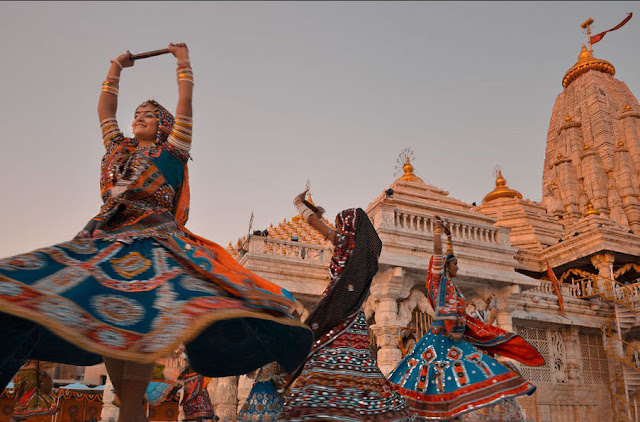
Gujarat is a western Indian state that is famous for rich culture and heritage including various folk dance forms as mentioned below:
This folk dance form is practiced in both Gujarat and Rajasthan. It is associated with the lila (divine play) of Lord Krishna and Radha. It is popular during the Holi and Navratri festivals and is also performed on several other religious and cultural ceremonies. Although Raas has different forms, the one performed with dandiyas is most popular. In Dandiya Raas men and women form two circles and dance with sticks in their hands. Traditional musical instruments like dhol, tabla, bongos, etc., are played as the dancers move around in a choreographed manner clicking the sticks held in their hands with each other or with those of others.
Garba
The Garba dance is one of the biggest symbols of the rich Gujarati culture and today, it is popular among many other communities in the country and even in other parts of the world. The word Garba means womb and hence the dance signifies life. It is traditionally performed around a centrally lit clay lantern called the Garbha Deep. The dance form symbolizes the Hindu view of time. The dancers form a ring around the central lamp and revolve in circles. It represents the cycle of time from birth to death and again rebirth. The central lamp represents the Goddess of power who remains constant throughout time. Thus, the dance symbolizes that in a constantly changing universe, the only thing that remains unchanged is the Goddess. Today, the dance form has been infused with elements from the Dandiya Raas and the merger of these two dances has evolved into the modern-day energy dance performed at numerous festivals, ceremonies and cultural programs in India and other parts of the world. The Garba dances wear colorful traditional costumes. Women dress up in Chaniya choli, a highly three-piece dress consisting of a blouse, a flared skirt, and a dupatta. The dress is decorated with rich embroidery work, mirrors, beads, shells, etc. Women also adorn themselves with jewelry and make-up. Men wear kafni pyjamas and a Ghagra.
Tippani Dance
This dance form is also known as the ‘Tippani Nritya’ or the ‘Matla Dance’. It is usually practiced during the Hindu festivals of Diwali and Holi or during weddings. The dance form traces its origin to the Chorwad region of Saurashtra. A wooden stick tipped by a square iron or wooden block is an integral part of the dance which is exclusively performed by women. The dance initially developed among the laborer community in the region who would use similar sticks to press lime into a house’s foundation or floor. To break the monotony associated with their work, the laborers developed the dance form for their own entertainment. The stick used in the dance is called the Tippani. Often traditional interments like tabla, dhol, brass plates, etc., are used to create music for the dance.
Padhar Dance
This folk dance is performed by the Padhar fishermen community living along the Nal Sarovar’s banks in Gujarat’s Bhal region. Small sticks are held by dancers during the performance and they usually enact rowing movements while dancing. Such dances are usually associated with water-related songs.
Other Folk Dances Of Gujarat
The Aagawa, Hudo, Siddi Dhamal, and Matukadi are some of the other folk dances of Gujarat.


No comments:
Post a Comment